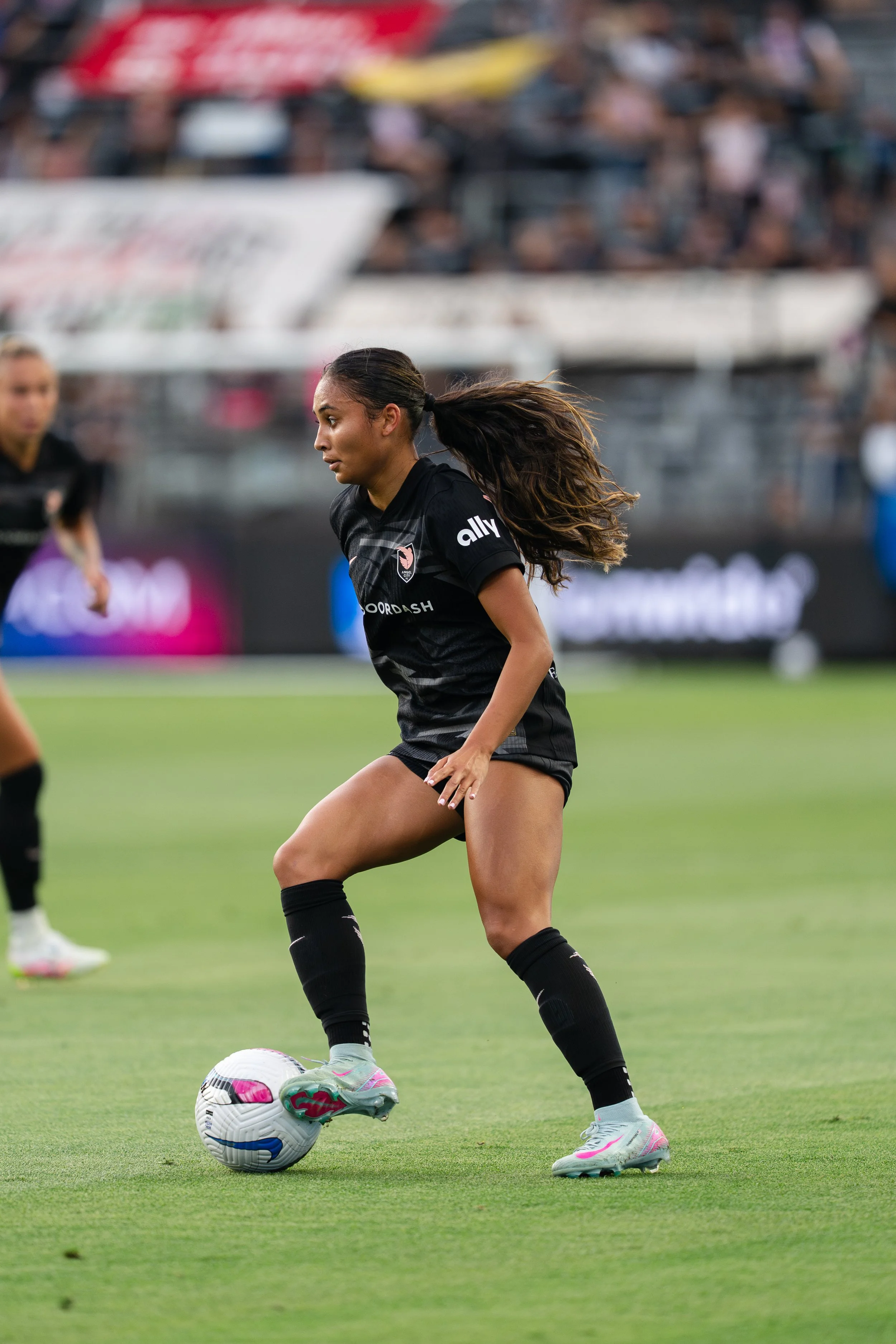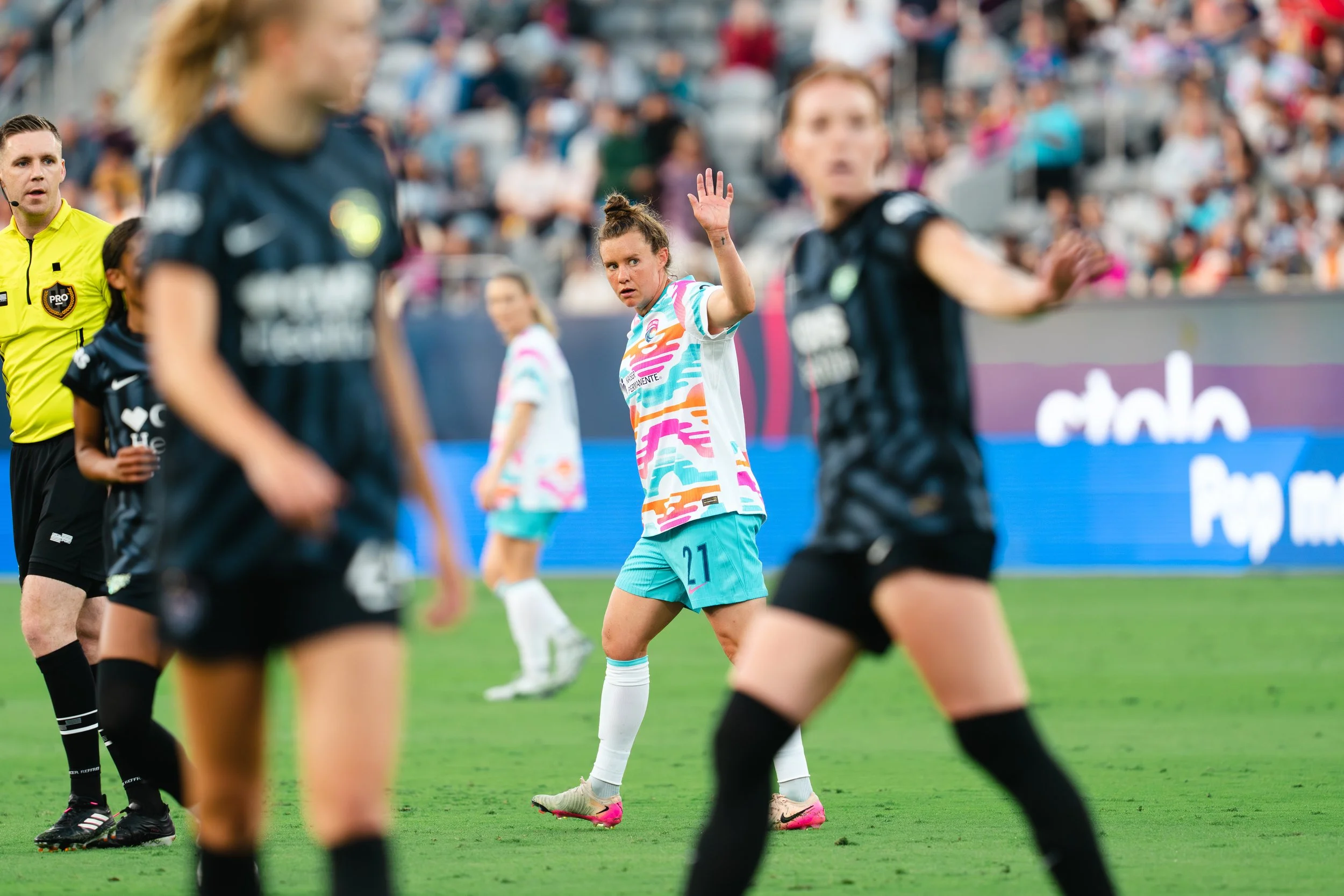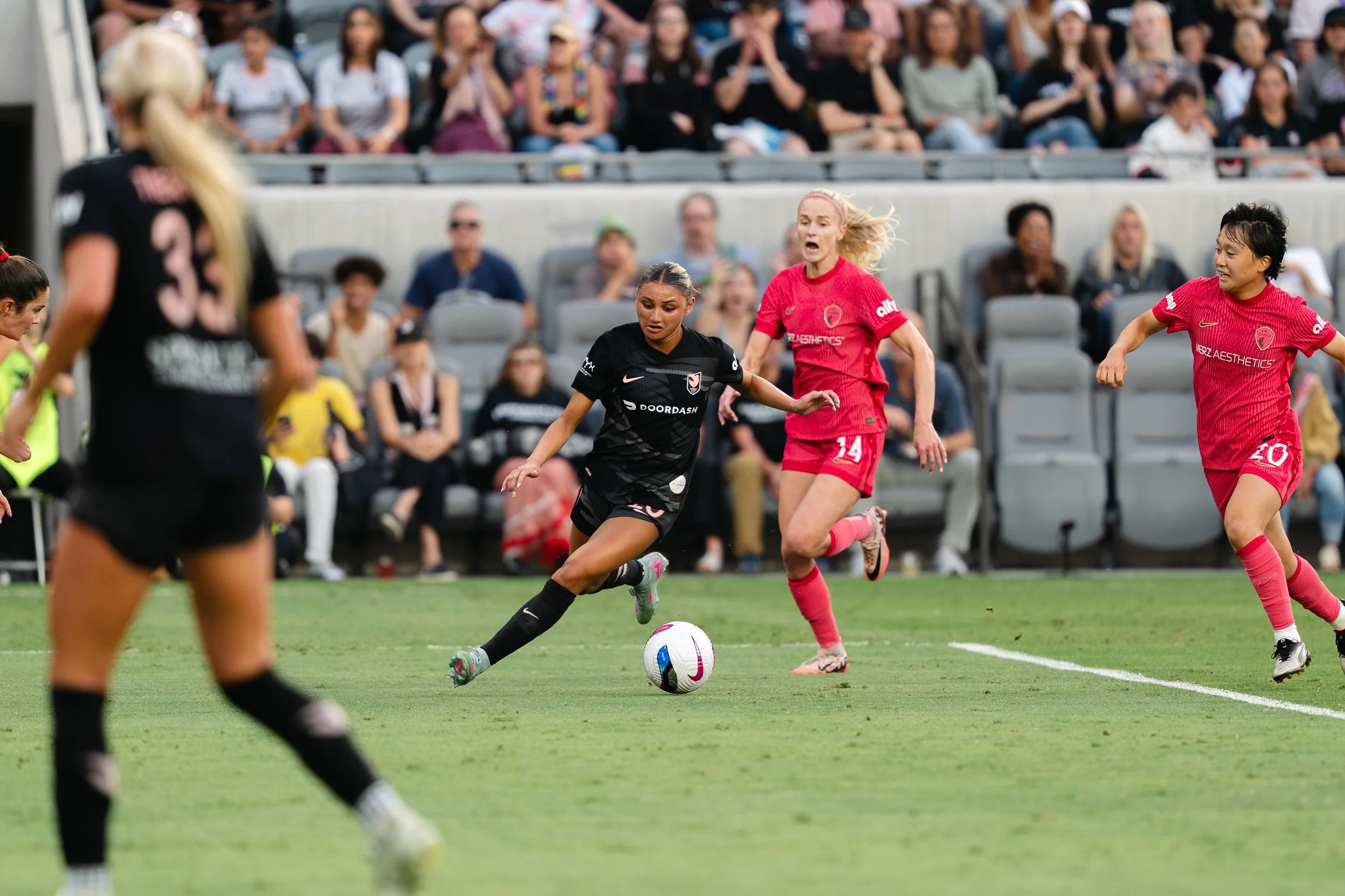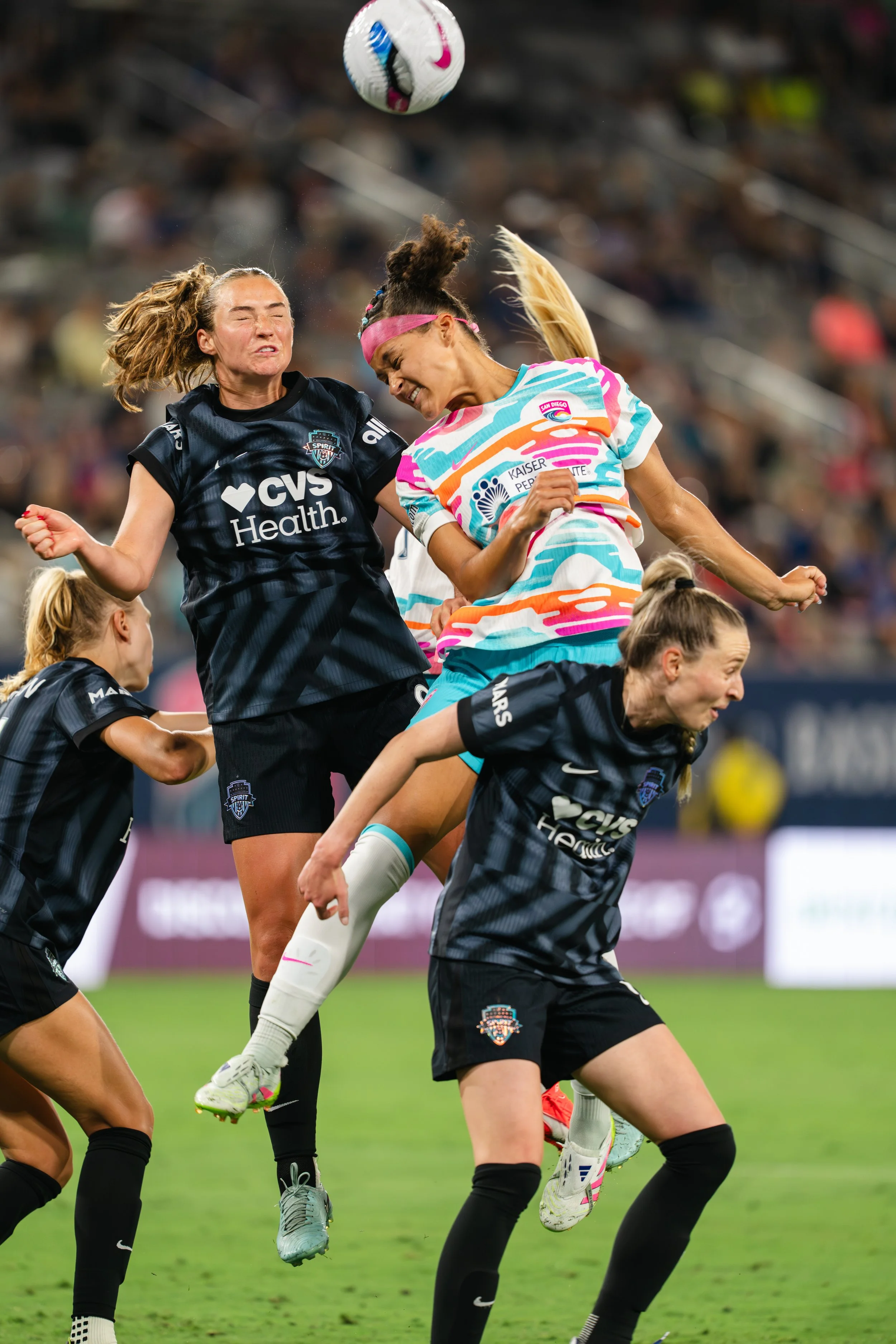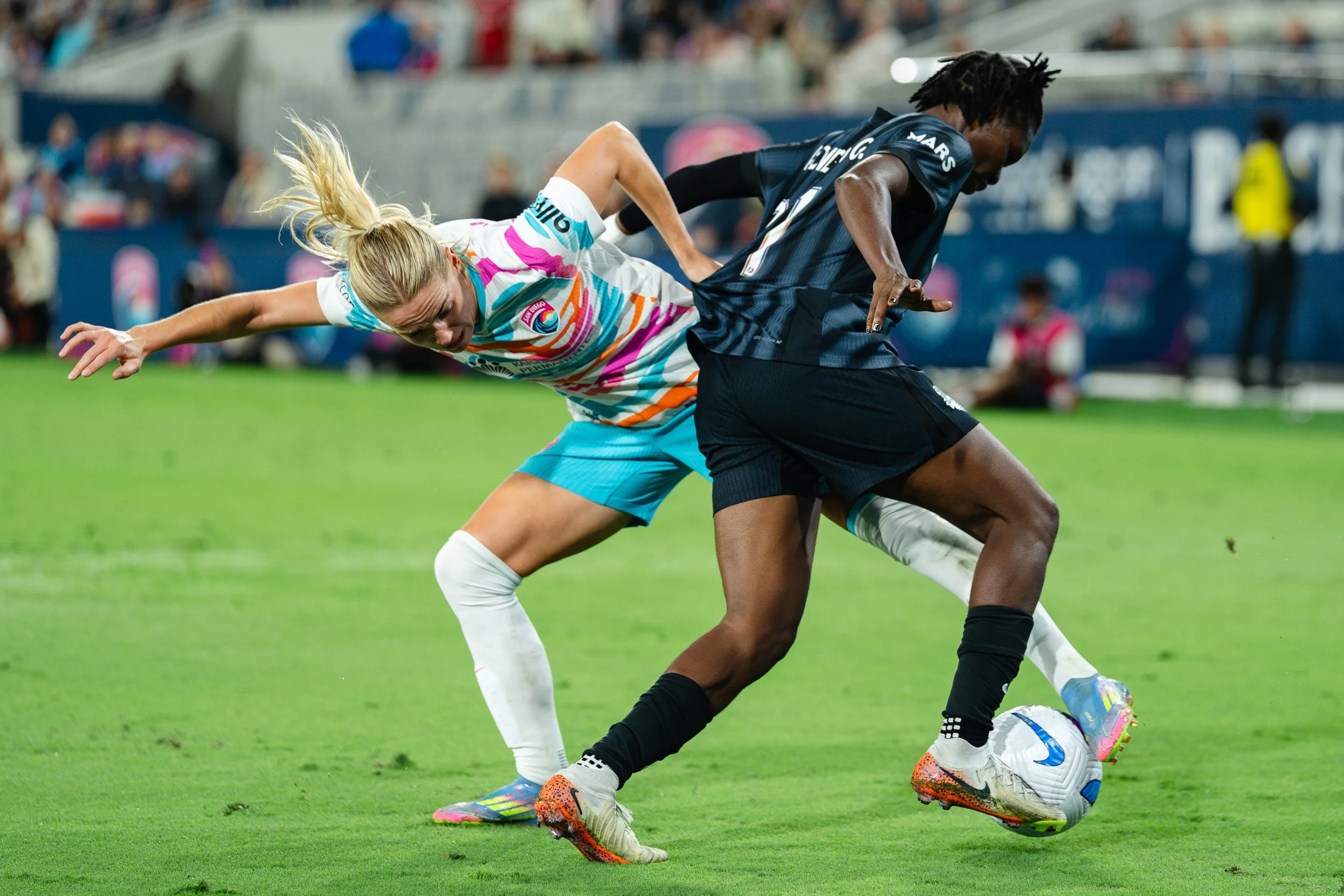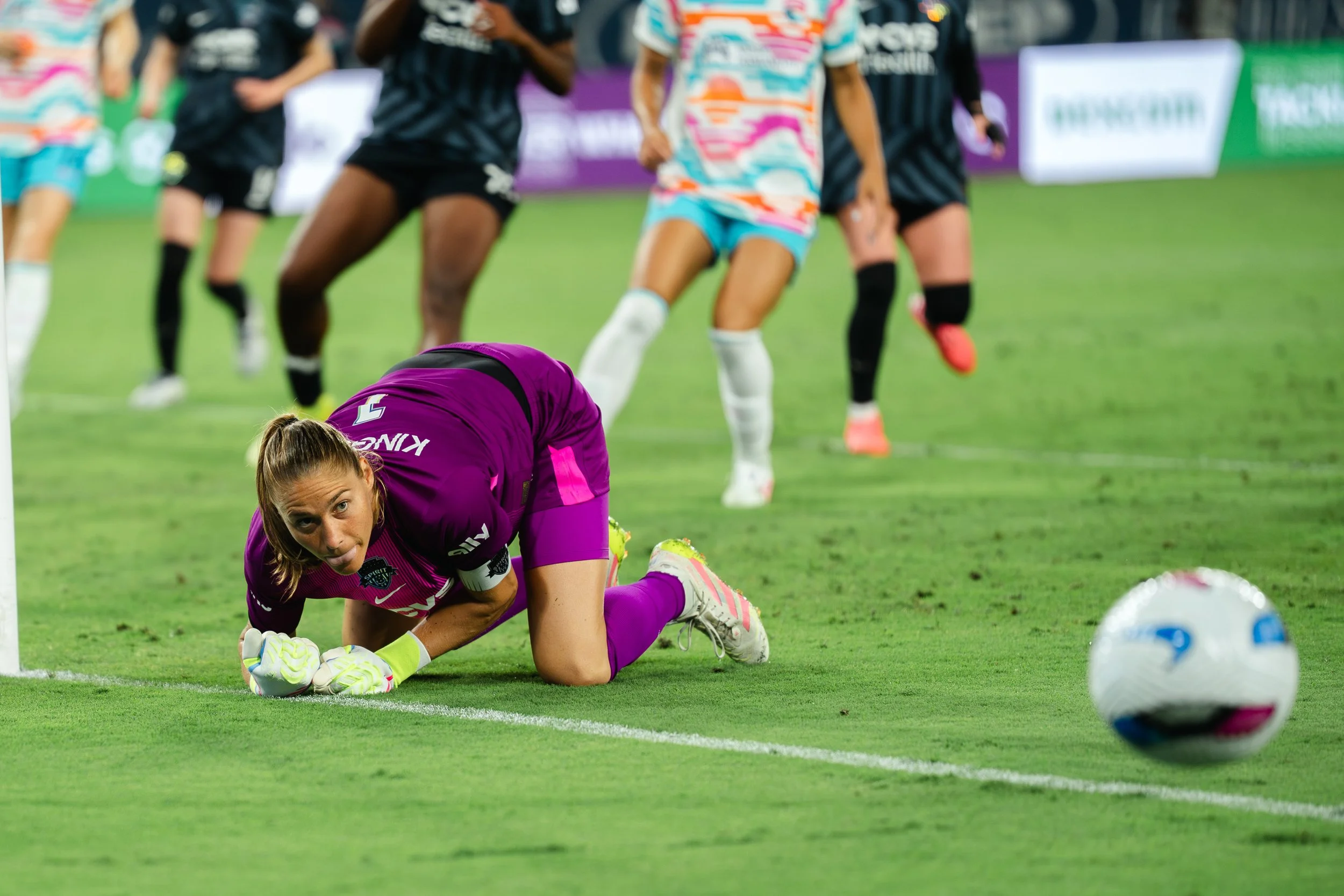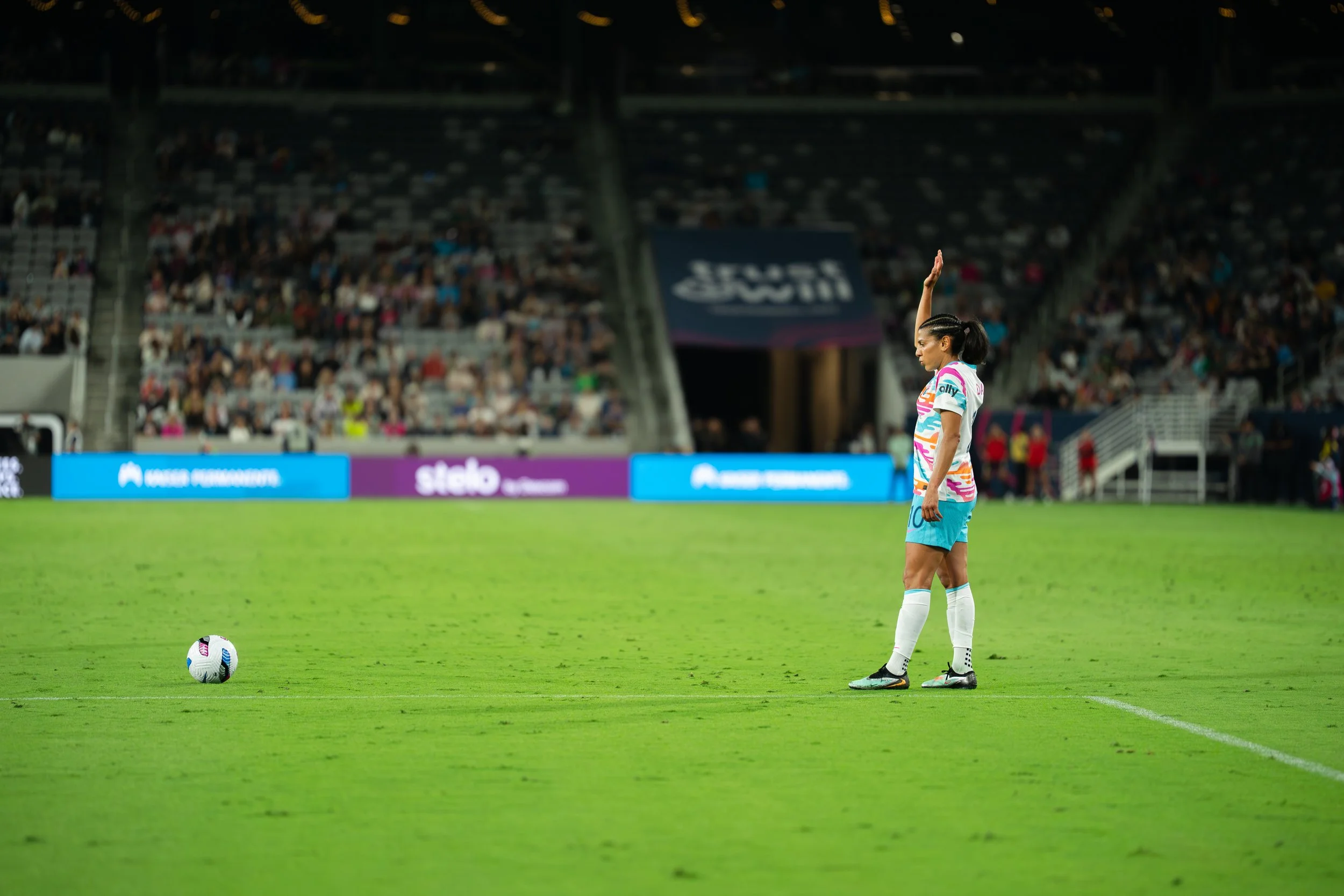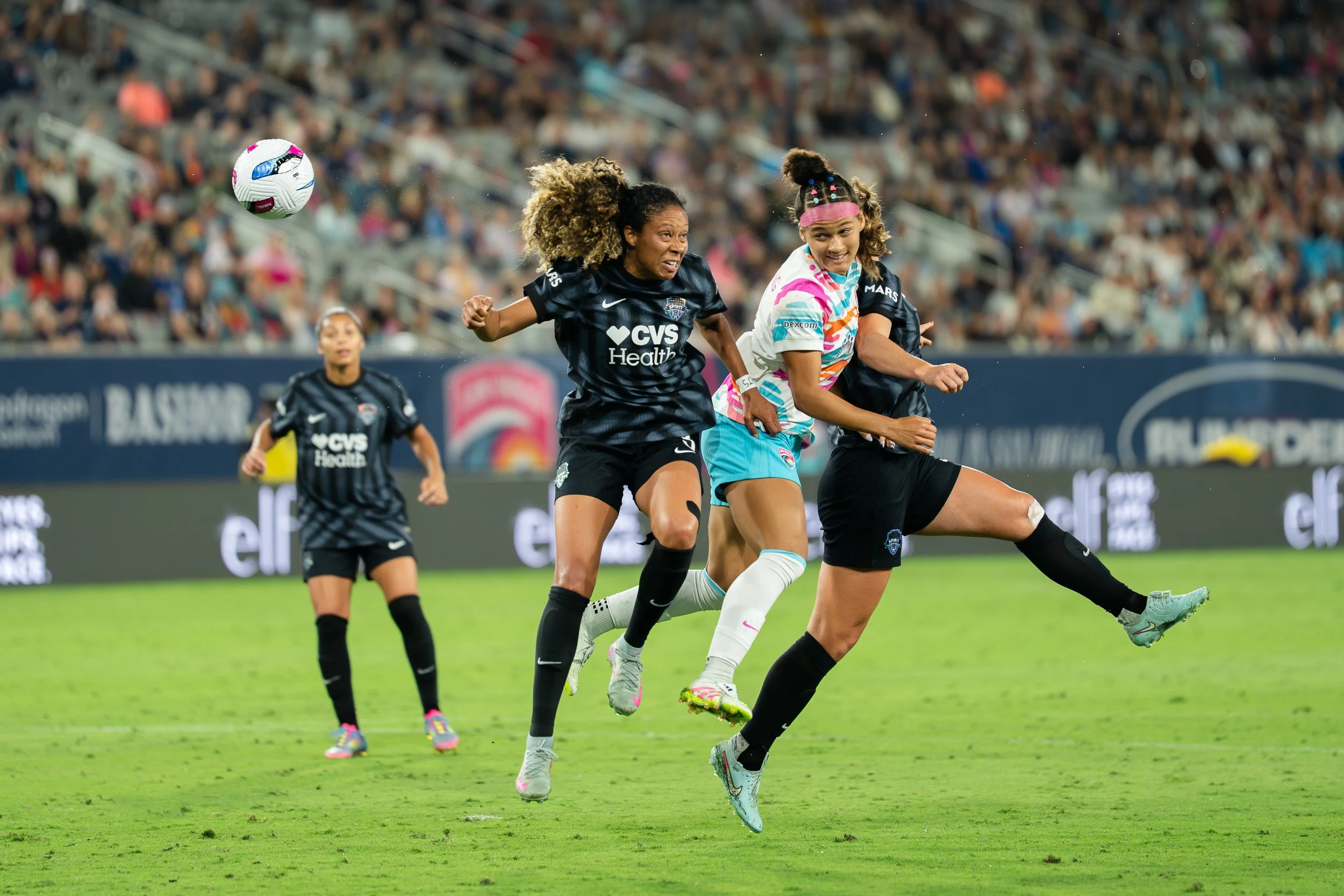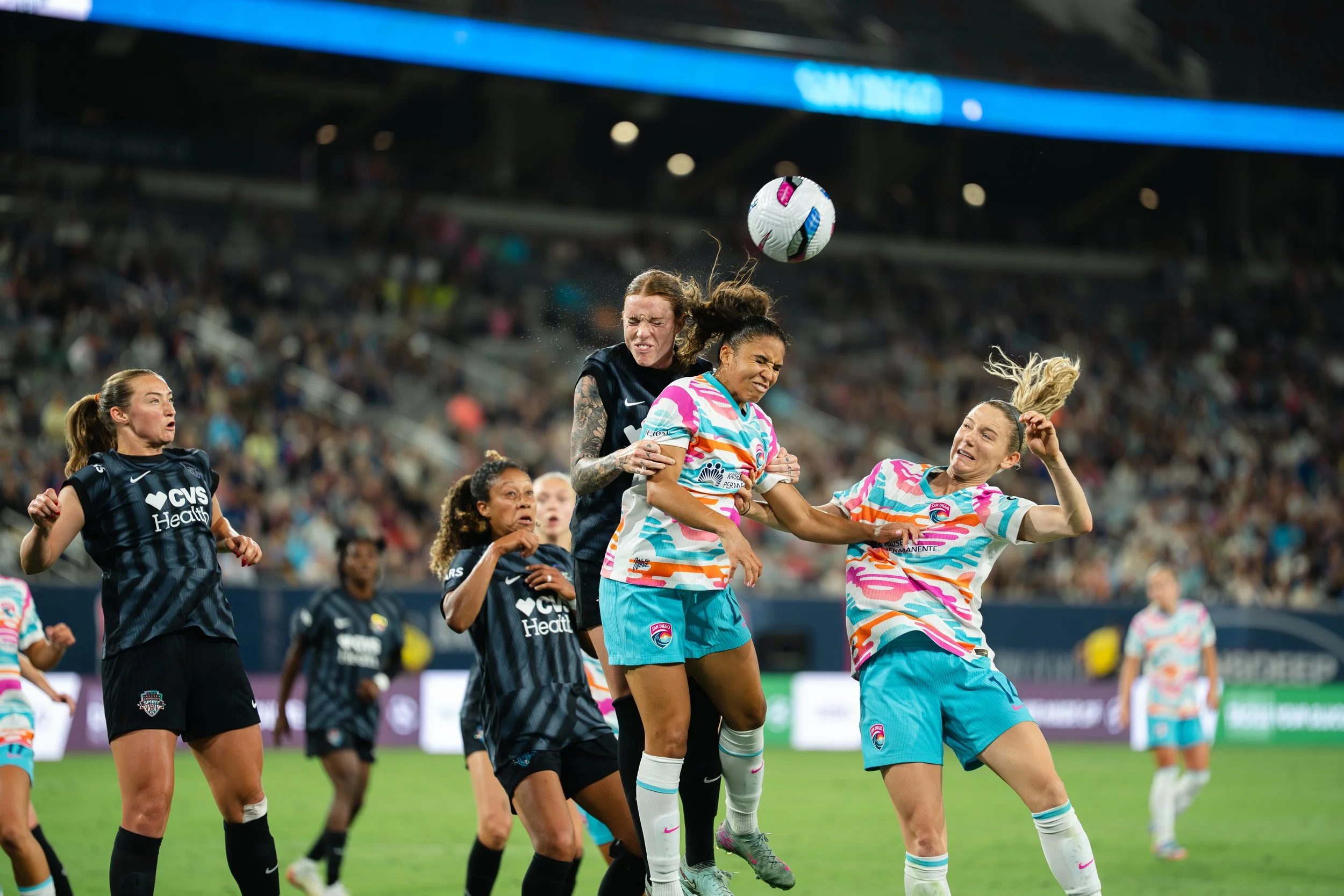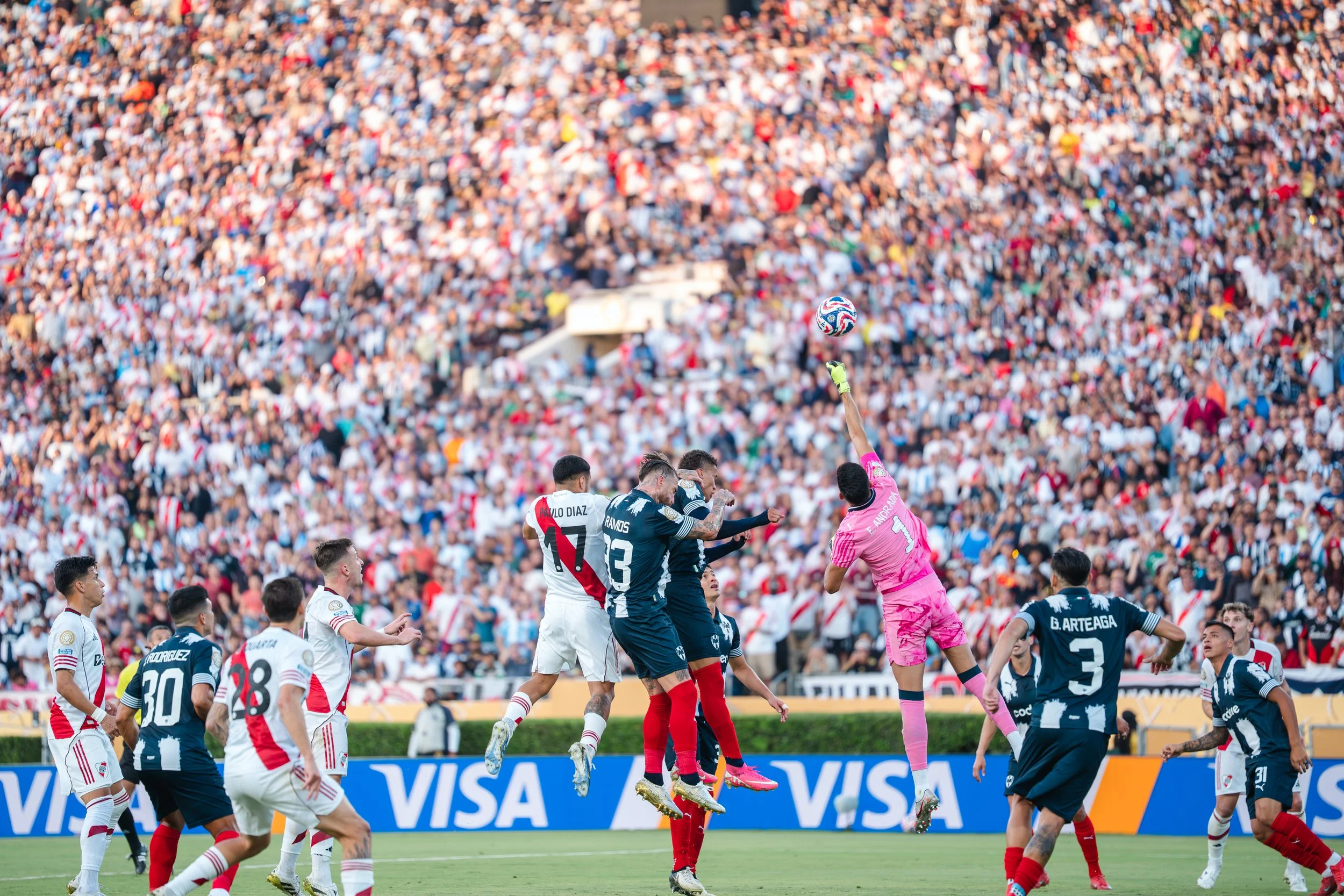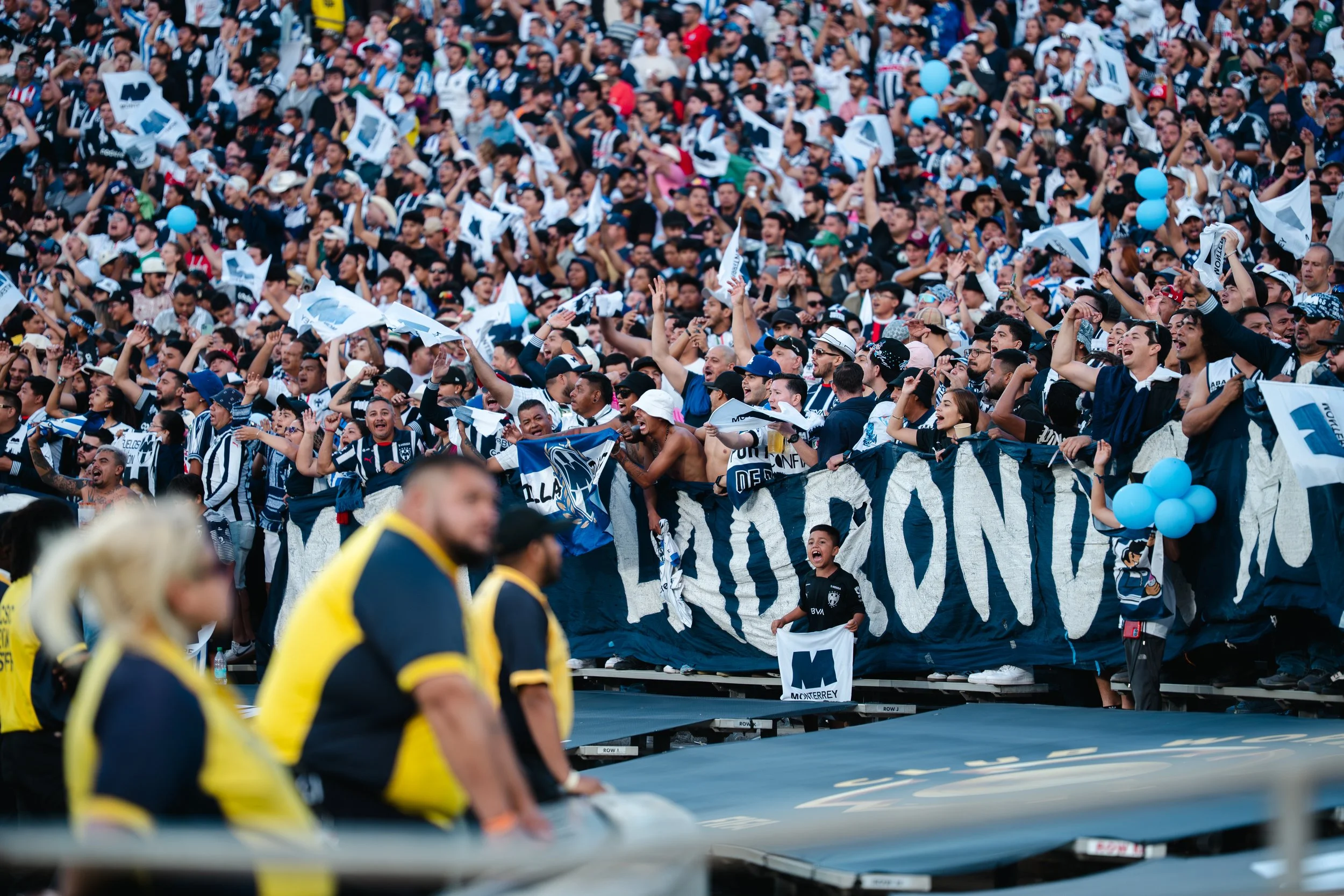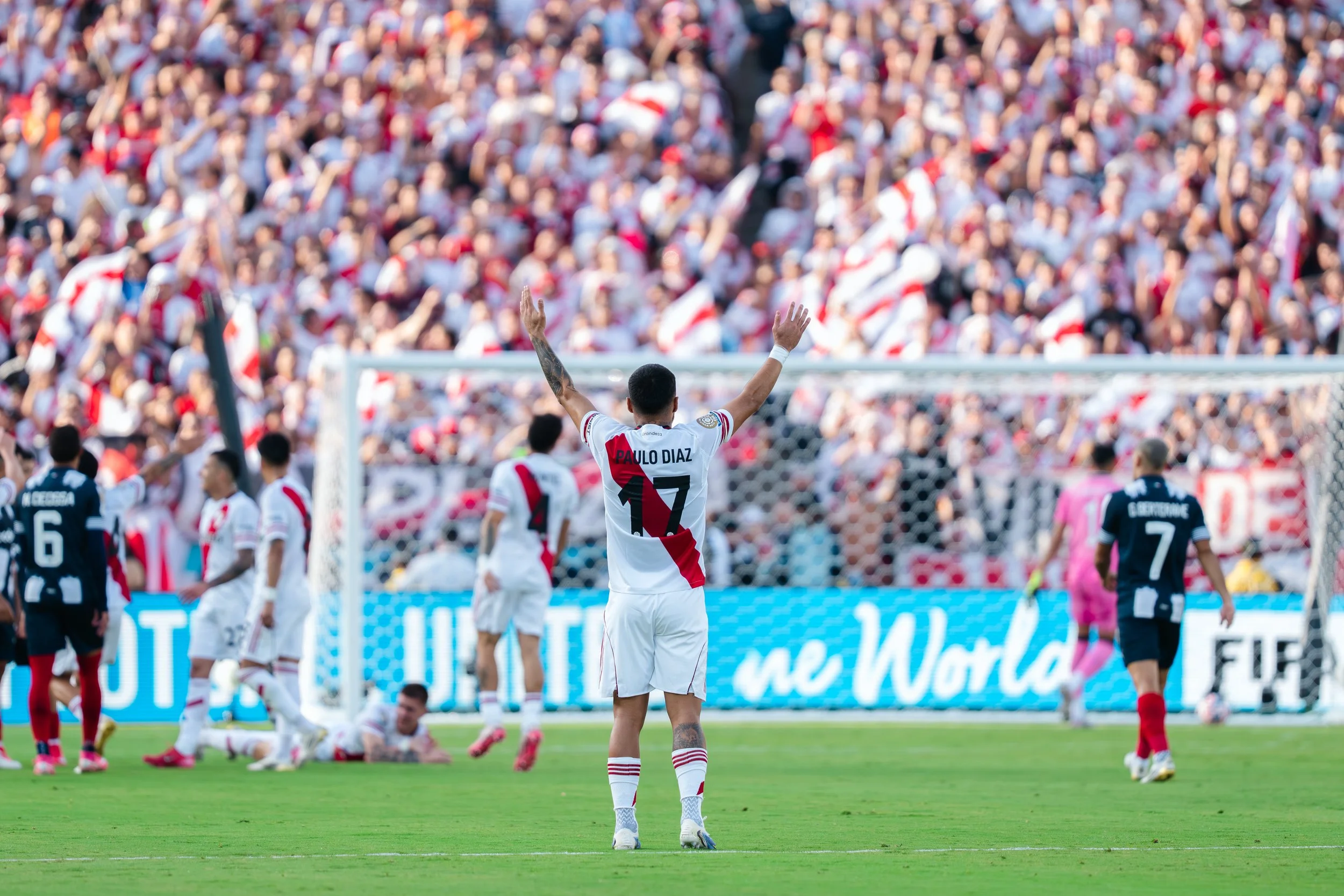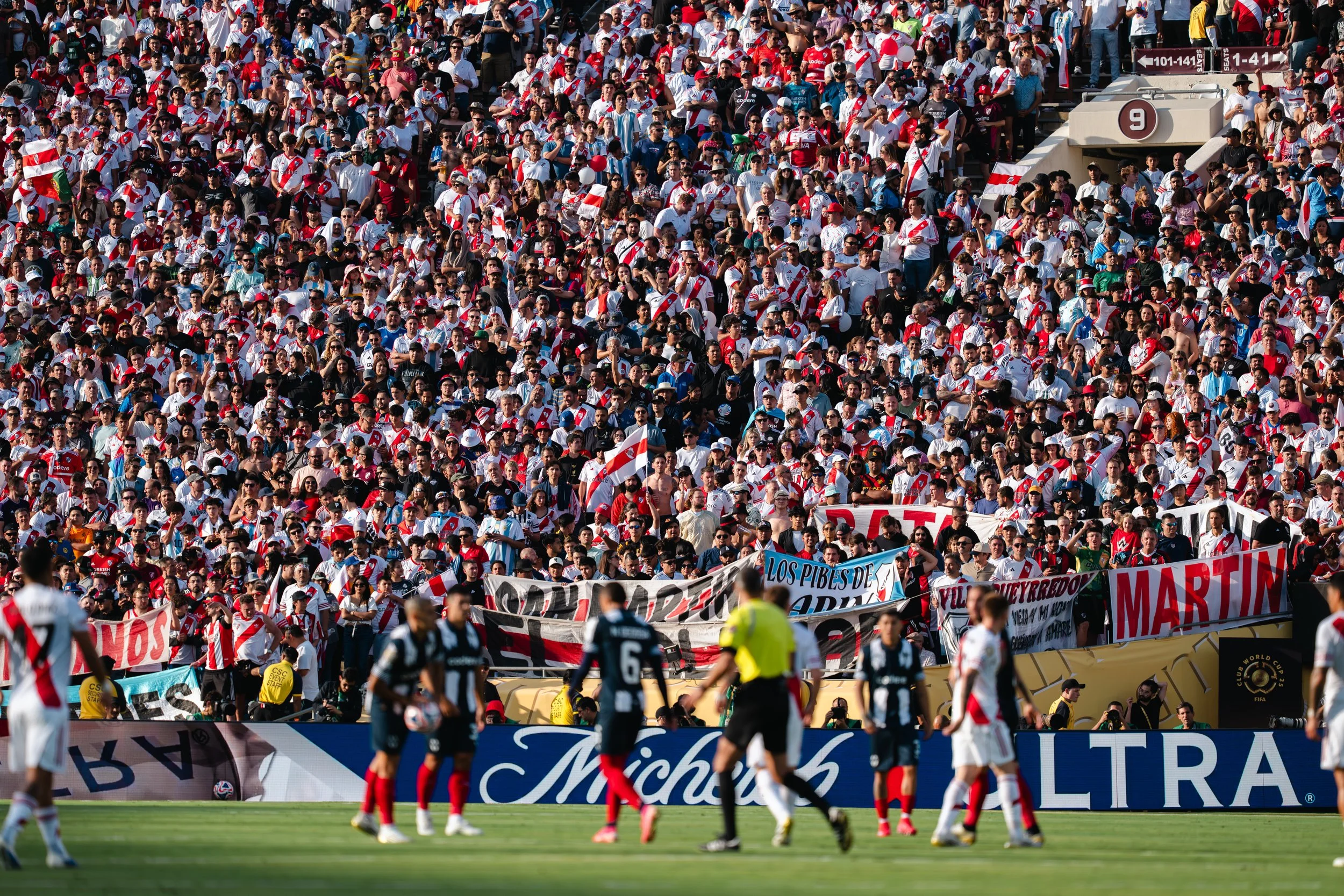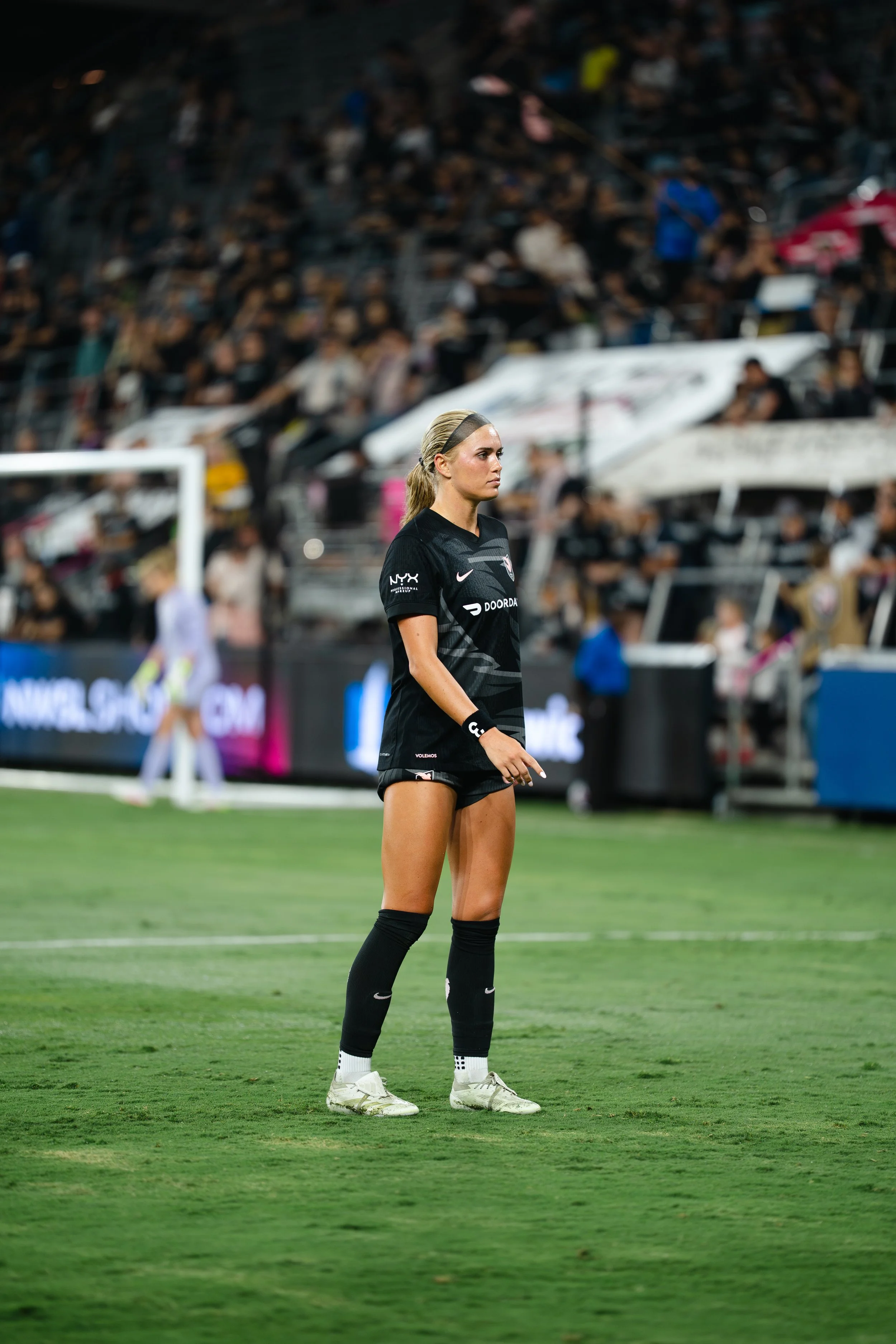Opinion Piece: What women’s football can learn from the club world cup
As a woman in the sports media landscape, the apex mountain of being a part of any FIFA event can only be compared to the Olympics in terms of prestige. When I first saw the news of Bet on Her being approved as an official FIFA-accredited media organization, I felt like we had finally reached the top. Our first assignment? The 2025 Club World Cup — a tournament veiled in controversy, also prestige, and probably most importantly, an LA-seeded group making it accessible while also continuing to cover the women’s sports assignments in the NWSL and WNBA this summer.
Experiencing a FIFA tournament for the first time was like walking into a cathedral of global football. You feel the weight of it — the history, the politics, the chaos, and the devotion. You feel it in the flags, in the drums, in the rhythm of songs chanted in Portuguese, Spanish, Arabic, French, and for South American fans of clubs like River Plate or Botafogo, these matches are not just entertainment: they’re embodiments of identity. They’re a collective hive memory formed in the heat and chaos of emotion. They’re inheritance that is passed down in stories generation to generation of the pilgrimage to the US to see your team play at great sacrifice in many cases to personal finances. And here’s the thing — you don’t have to understand every word of the chant to feel it in your bones while attending the match as a neutral fan. That’s the kind of atmosphere that makes you want to come back again and again. When Botafogo scored against PSG the current European champions, the energy in the Rose Bowl reached spiritual levels as the Brazilian fans elated in a way that is difficult for the average American fan to understand. It was so clear that for those fans, men and women pretty evenly distributed, this moment was of great personal significance. It made them feel alive in a way only football can. And this genuinely got me thinking—what would it take for women’s football to achieve this level of scale, prestige, and devotion?
What if women’s football had that kind of energy?
What I am not trying to say is that this is just about attendance. I don’t think the answer is to create a polite sanitized atmosphere or bias totally to “family-friendly” crowds that make for a great weekend family activity for young girls as needed as that is in growing the sport as well. But rather I’m talking about true, tribal, passionate support, and growing a sentiment and pride not just in the quality of the women’s game but relishing the characters and narratives involved in each team to the level of lore. The kind of lore that turns matches into rituals and true emotional experiences that are sought after not just for the outcome of the match but also for the driving narratives of the club that create a higher order of meaning to the game. The kind of meaning that looks in practice like scarves raised, giant tiafo’s of women club legends, songs passed down through generations, and fans who live for matchday regardless of where their club stands in the rankings. If women’s football had the same level of fanaticism — real, cultural obsession — we’d be talking about a revolution not just in women’s sport but in football in America. And here’s what’s wild: I genuinely don’t believe that this is about a skill gap between the men’s and women’s game, or a production gap in the quality of the infrastructure around the two (although I think that case could be made) which are the classic arguments used by men’s sports commentary related to women’s sports. But rather, I think it’s a culture gap, and culture is something that needs to be built by women in sport and for women in sport. More importantly, I think this is a women’s specific culture gap, and it is difficult to ignore when you see the fanatic level of fandom coming from women for men’s sides in any sport, but most strikingly for me to see first hand the level of women’s fandom of international men’s football. The teams playing in the Rose Bowl for the FIFA Club World Cup weren’t even culturally relevant here in the United States, and yet their butts in seats support from men AND women was incredible.
Ultimately, culture needs critical mass, and that can only come from inertia that is built over time through hard work. Don’t get me wrong, there are plenty of teams that have created this kind of fantastic fanatic culture in the NWSL. ACFC routinely sells out BMO stadium and brings the kind of energy that puts even the biggest MLS clubs to shame. I see it every single week, and I am always in a state of wonder when I realize the personal sacrifice these families make to support their club no matter what. However, that isn’t normal fare, and while some teams are doing a great job of drumming up support there are still teams that barely fill seats for matches. And that brings me to my second point:
If women supported women’s football the way women support men’s football — it would be unstoppable.
Let’s be honest. We’ve all seen it. The woman in the men’s Mbappé Real Madrid jersey who doesn’t know the name of the starting forward for the Madrid Femenino side. The woman who knows every stat about Messi’s Inter Miami debut but couldn’t name a single NWSL MVP. This isn’t about blame. It’s about habit, passion, and support. Women have been conditioned to consume sport within the contexts and frameworks used for men’s leagues whether it’s the coverage and analysis, gambling, or talk shows that drive 24/7 coverage on network programming. Our fandom has been contained to men’s teams because we’ve taken all of the air out of the narratives of women’s teams. But it doesn’t have to stay that way. Because when women do show up for women it changes everything. We’ve seen it with the WNBA this year and the story lines that have been driven by the drama as well as incredible play of Caitlin Clark. We’ve seen it with England’s Lionesses that have turned the tide of support in the UK. We’re seeing it now with the growth of the NWSL, of Liga MX Femenil, of the Women’s Champions League. But we need more. We need fan clubs. We need away day culture. We need flags in the stands and tifos in the sky. And most of all, we need to normalize being loud about women’s football — especially among women. We need conversation, obsession, odds making, talk shows, debates, drama, intrigue, controversy, and most of all we as women need to take sides.
Imagine a world where instead of seeing the woman in the Mbappé jersey you see her wearing an Alyssa Thompson jersey instead, and the sighting isn’t a statistical anomaly. Imagine instead of group chats pouring over the over-under odds for the NBA playoffs, there are group chats debating the parlay of Kenza Dali scoring while also assisting in the same Wave FC match. Imagine, if instead of generic updates about a women’s match that took place morning sports talk discussed the drama of KCs rise as an NWSL powerhouse and the template for building super teams in the NWSL. Imagine that. But why can’t it simply be the case? Why can’t imagination turn into reality? Why can’t everyone watch women’s sport, but more importantly why can’t women be obsessed with women’s sport.
So what can women’s football learn from the Club World Cup? That you don’t need a perfect tournament to spark obsession. You just need people who believe it’s worth obsessing over. You need passion for your side no matter how many thousands of miles you need to travel to see them. Women’s sport needs to be a cultural priority — for women first and foremost. It needs to be worth it — for women first and foremost.
And trust me — it is.



